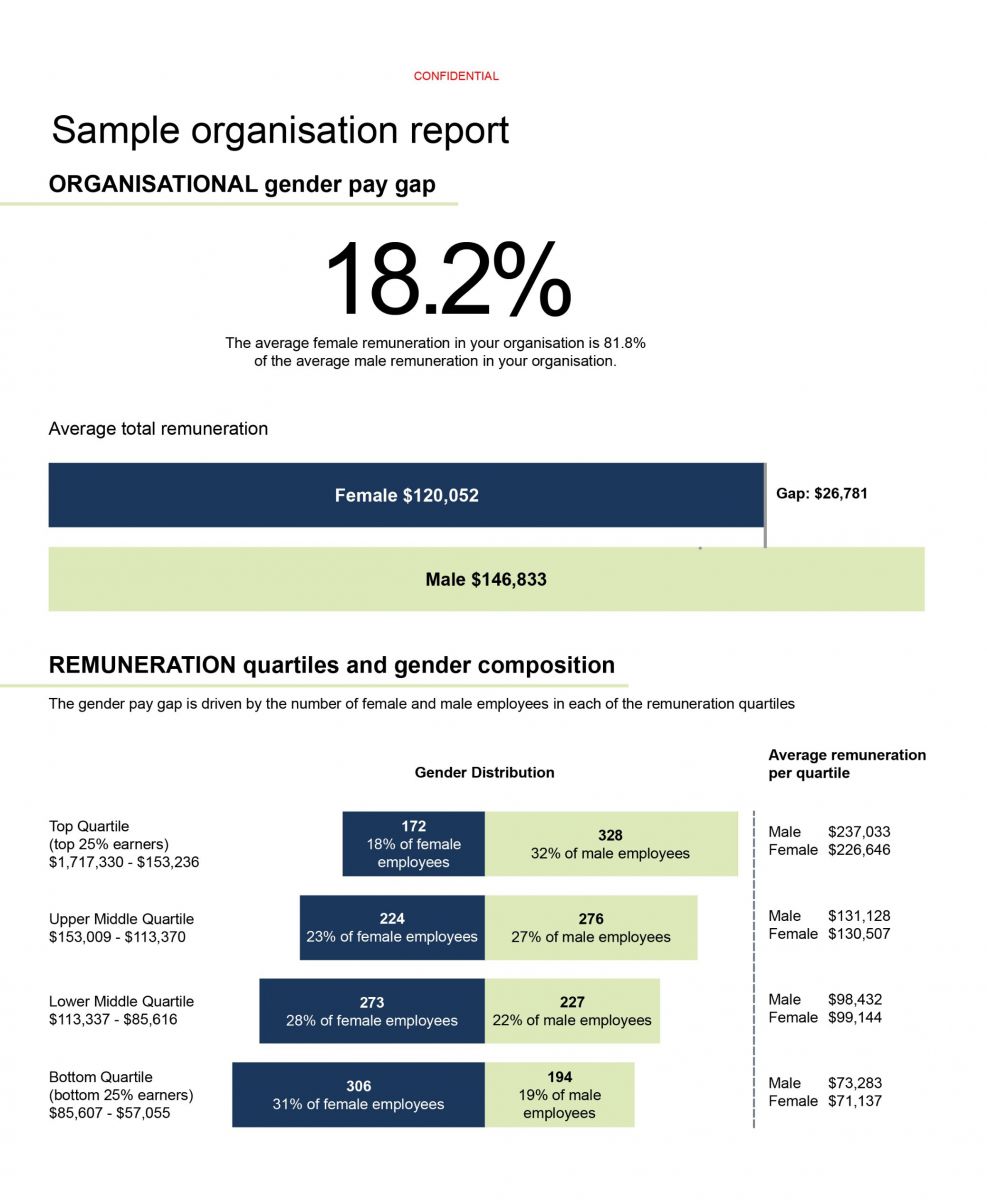Current approach
Employers report remuneration data to WGEA, but no individual employee remuneration is published by WGEA. WGEA uses this remuneration data to publish gender pay gaps by industry – e.g. for the mining, health care and social assistance, financial and insurance services, and construction industries.
However, the Workplace Gender Equality Act provides that WGEA is not able to include remuneration data provided by a relevant employer in WGEA’s public data or reports (section 14 of the Act). This means WGEA cannot currently publish an employer’s gender pay gap at an organisation level.
Proposed approach
Many stakeholders called for WGEA to publish the gender pay gaps of organisations. They said that the current approach of publishing aggregate industry gender pay gaps is not creating the transparency, accountability and insights necessary to closing the gender pay gap fast enough. As noted earlier, WGEA data (2019-20) shows all industries in Australia have a gender pay gap in favour of men. Stakeholders said increased transparency of an organisation’s gender pay gap promotes accountability and accelerates progress towards reducing its gender pay gap.
WGEA recommended publishing gender pay gaps at the organisation level because:
Increased transparency in Australia’s gender equality reporting can promote accountability for workplace gender equality and drive reductions in the gender pay gap. Transparency is “a vital first step” towards addressing the discrimination that contributes to pay gaps and other workplace inequalities. Increased transparency can cause organisations to assess systems and processes for pay, job evaluation and performance. Publishing individual organisations gender pay gaps can also generate stakeholder engagement and pressure and inform investment decisions. Without organisational gender pay gaps – “arguably the most important variable” – in the Agency’s public dataset, the dataset is less useful for improving gender equality outcomes.
This approach is not new – a number of Australian employers are already publishing their gender pay gaps. Also, in 2017 the UK Government passed legislation to require large employers to annually publicly report their gender pay gap. This includes the mean and median gender pay gaps; the mean and median gender bonus gaps; the proportion of men and women who received bonuses; and the proportions of male and female employees in each pay quartile.
Some business groups and some employers are concerned about possible negative impacts of reporting gender pay gaps at an organisation level. They are concerned about the possibility of dampening productivity due to low morale, slowing men’s wages growth to raise women’s wages comparatively, and challenges for global organisations to reconcile international reporting obligations. Some stakeholders also noted remuneration is highly sensitive data that should not be made public.
But some investors noted they assess their fund holdings against a number of Environmental Social and Governance (ESG) Key Performance Indicators and find WGEA data useful in making those assessments. This involves comparing company performance across a range of metrics – including WGEA’s data on gender equality – to decide where to deploy capital.
To accelerate closing Australia’s gender pay gap, it is recommended that the Workplace Gender Equality Act be amended to enable WGEA to publish gender pay gap information at an employer level as an overall figure and by quartile to encourage change within organisations (Recommendation 2.1). As is the case currently, individual employee pay information would not be published.
Drivers of the gender pay gap are complex. Addressing the contributing factors requires a whole-of-community effort, including strong actions by employers. As this is a key change, it is proposed that there be further stakeholder consultation to ensure implementation of this recommendation achieves its intent: to hold employers accountable to take action, and minimise any unintended consequences.
Employers already provide remuneration data to WGEA – so Recommendation 2.1 does not impose any additional reporting requirements on employers. However, it is also proposed that a regulatory impact assessment be done ahead of implementation.
Issues for stakeholder consideration include privacy safeguards for smaller sized reporting organisations, the criteria WGEA should use to calculate remuneration data, publishing necessary contextual analysis to ensure proper interpretation, enabling employers with fewer than 100 employees to voluntarily report, and identifying the best way to present gender pay gap data at an organisation level. For example, whether it is presented as an overall percentage and/or as an average dollar difference.
Options for how to present quartile reporting and workforce composition by quartiles (gender distribution by head count across quartiles) are at figure 7. The quartile reporting example in figure 7 shows employees in an organisation divided into four equal groups, ranked from lowest to highest pay. The bottom quartile is the lowest earning group of employees, while the upper quartile is the highest earning group. This is one example of how quartile reporting could be represented. The proposed stakeholder consultation on how to implement Recommendation 2.1 will be an opportunity to work out the best way to represent quartile reporting.
To enable relevant employers to prepare for this change, employers could be given a two year grace period before WGEA reports individual organisation gender pay gaps. This two-year grace period would not prevent employers opting-in to WGEA publishing their organisational gender pay gap before publication is mandatory. WGEA could work with EOCGE citation holders to encourage voluntary reporting of organisation gender pay gaps. EOCGE employers could be ‘early adopters’ to show other employers what the new public data set could look like.
Figure 7 Example of possible way to present organisational gender pay gap and remuneration quartiles and gender composition (sample data)

Recommendation 2 – Publish organisation gender pay gaps to accelerate action to close them
2.1 Amend the Workplace Gender Equality Act 2012 to allow WGEA to publish gender pay gap information at an employer level as an overall figure and by quartile to encourage change within organisations. Individual employee pay information is not to be published. Conduct further stakeholder consultation to identify the best way to implement this recommendation and conduct a regulatory impact assessment ahead of implementation.
